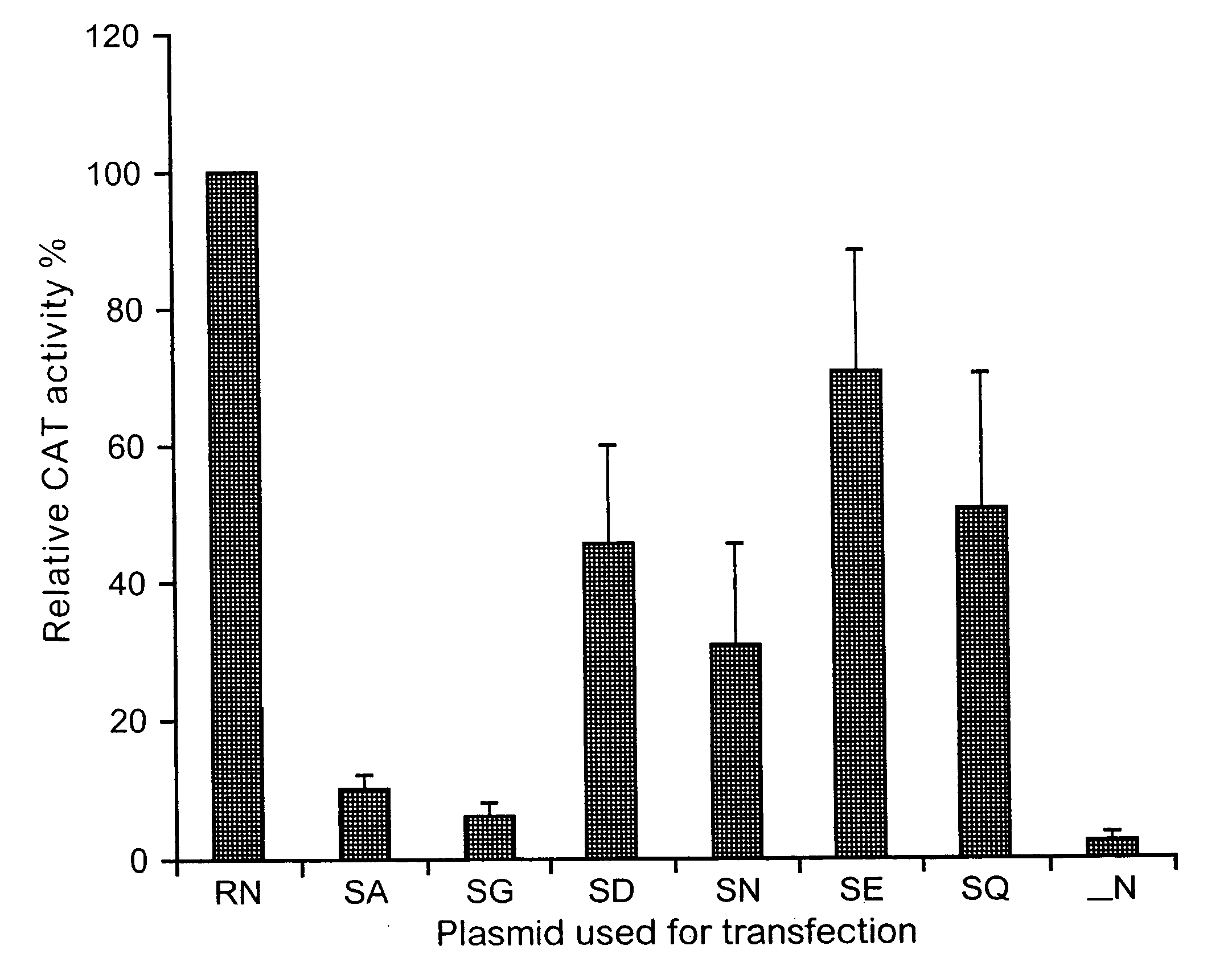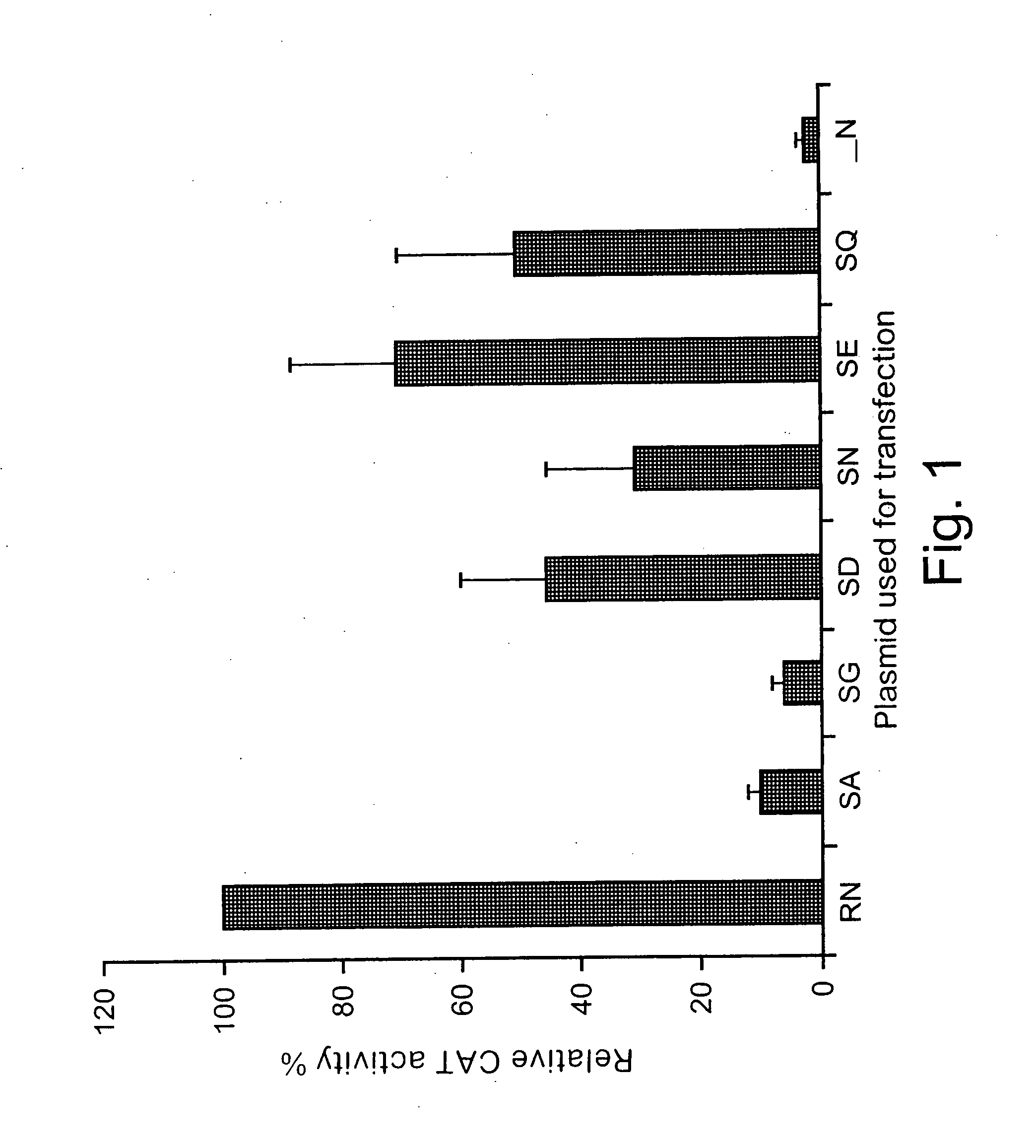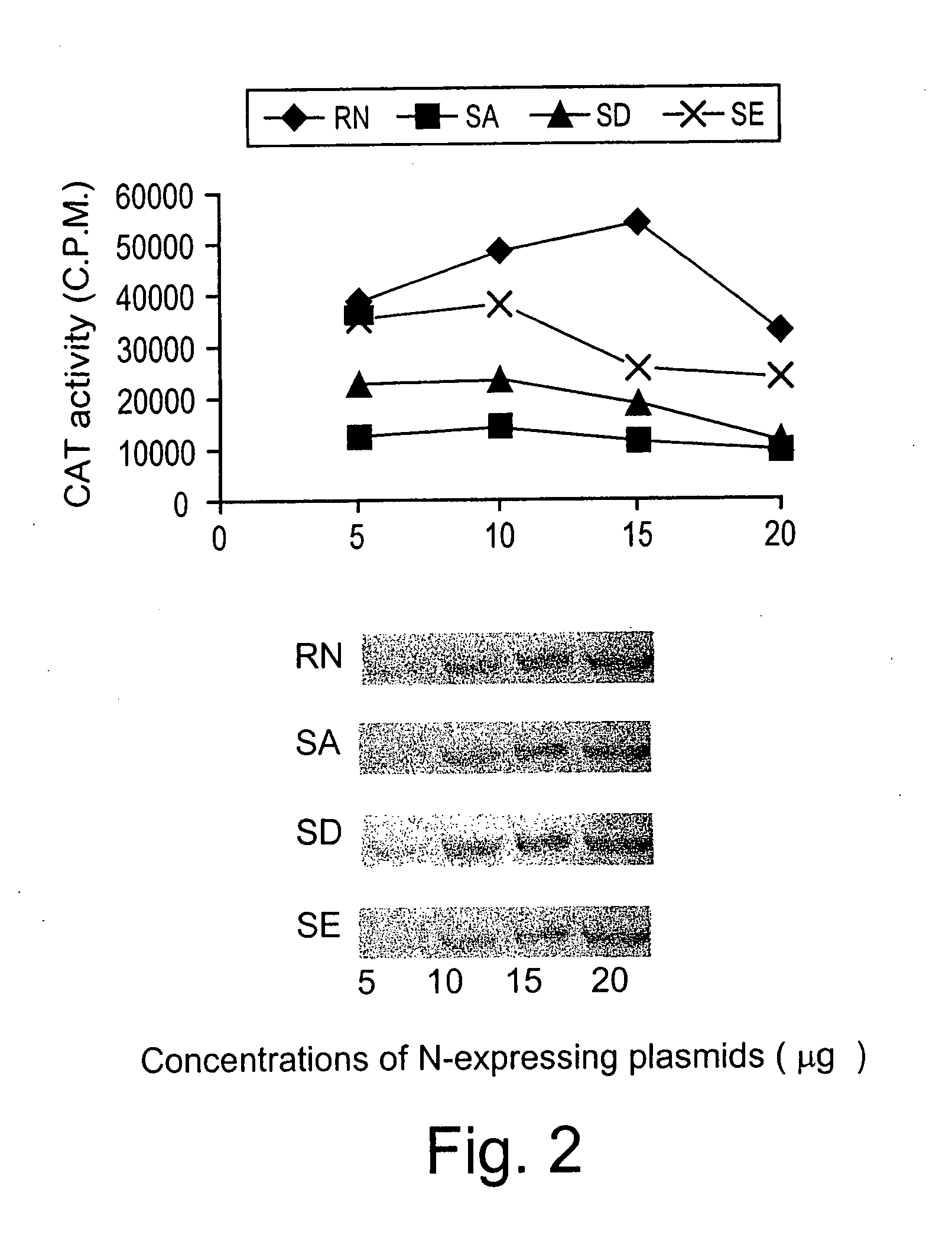Attenuated rabies virus with nucleoprotein mutation at the phosphorylation site for vaccination against rabies and gene therapy in the CNS
a rabies virus and nucleoprotein technology, applied in the field of vaccine composition, can solve the problems of human health threats, rabies in wildlife is more challenging, and the synthesis of rabies virus is not under the control of the rabies virus regulatory machinery, so as to improve the composition of vaccines
- Summary
- Abstract
- Description
- Claims
- Application Information
AI Technical Summary
Benefits of technology
Problems solved by technology
Method used
Image
Examples
example1
[0138] Rabies virus N preferentially encapsidates genomic RNA. Rabies virus N, like other N from negative-stranded RNA viruses, plays important roles in the regulation of viral transcription and replication by encapsidating de novo synthesized genomic RNA (Yang et al., 1998). To investigate the function of rabies virus N, rabies virus N was expressed in the baculovirus system and purified the N to near homogeneity by affinity chromatography (Fu et al., 1991). When the purified N was used to encapsidate RNA, it was found that N bound to all RNA transcripts tested (Yang et al., 1998). These include rabies virus positive-stranded leader RNA (L-70), the 5′ end of rabies virus N mRNA (N-70), and a control nonviral RNA (bluescript RNA, B-70). However, the interaction between recombinant N and the rabies virus leader RNA was at least three times greater than that between recombinant N and N mRNA and 10 times greater than that between recombinant N and the control RNA, indicating that N pre...
example2
[0139] Phosphorylation of rabies virus N modulates viral transcription and replication. Rabies virus N is phosphorylated (Sokol et al., 1973) and its phosphorylation site has been identified as serine at position 389 (Dietzschold et al., 1987). Because N plays important roles in regulating viral transcription and replication by encapsidating de novo synthesized genomic RNA (Wunner, 1991), phosphorylation of N may affect viral transcription and replication. To determine whether phosphorylation of N plays a regulatory role in viral transcription and replication, the reverse genetics system described by Conzelmann and Schnell (Conzelmann et al., 1994) was used to express a rabies virus minigenome and directly test the effects of N phosphorylation on viral RNA transcription and replication. The minigenome was expressed from the plasmid pSDI-CAT directed by T7 polymerase. When expressed in cells, the minigenomic RNA contains 68 nucleotides from the 3′ end and 169 nucleotides from the 5′ ...
example 3
[0141] The serine at position 389 was mutated to alanine, aspartic acid, or glutamic acid and the effects of these mutations on rabies virus transcription and replication in the minigenome as well as with the full infectious virus were examined. Mutation of the serine to each of the other amino acids resulted in the synthesis of an unphosphorylated N and reduction of viral transcription and replication in the minigenome. Mutations from S to A and S to D also resulted in reduction of both viral transcription and replication in full-length infectious viruses. Growth curve studies indicated that production of the mutant virus with the S-to-A mutation (L16A) was as much as 10,000-fold less than that of the wild-type virus (L16). Northern blot hybridization with rabies virus gene probes revealed that the rates of viral transcription and replication were reduced by as much as 10-fold in the mutant viruses when the N was not phosphorylated. Interpretation of the data from the minigenome sy...
PUM
 Login to View More
Login to View More Abstract
Description
Claims
Application Information
 Login to View More
Login to View More - R&D
- Intellectual Property
- Life Sciences
- Materials
- Tech Scout
- Unparalleled Data Quality
- Higher Quality Content
- 60% Fewer Hallucinations
Browse by: Latest US Patents, China's latest patents, Technical Efficacy Thesaurus, Application Domain, Technology Topic, Popular Technical Reports.
© 2025 PatSnap. All rights reserved.Legal|Privacy policy|Modern Slavery Act Transparency Statement|Sitemap|About US| Contact US: help@patsnap.com



